Dear EOS Community,
This year has been an extraordinary one and has been challenging for many, but it has demonstrated how resilient and innovative we can be in response to unique circumstances during this “new normal”. We continued addressing critical questions in Earth science, conducted more research in Singapore than ever before, and brought our science to the public with two exhibitions and a documentary series in collaboration with our partners.
EOS Leadership Transition
I am indebted to Director Emeritus Kerry Sieh for founding EOS and for inviting me to be part of the team in Singapore three years ago. Kerry’s legacy is a world-class research institute, dedicated to strengthening our resilience to natural hazards.
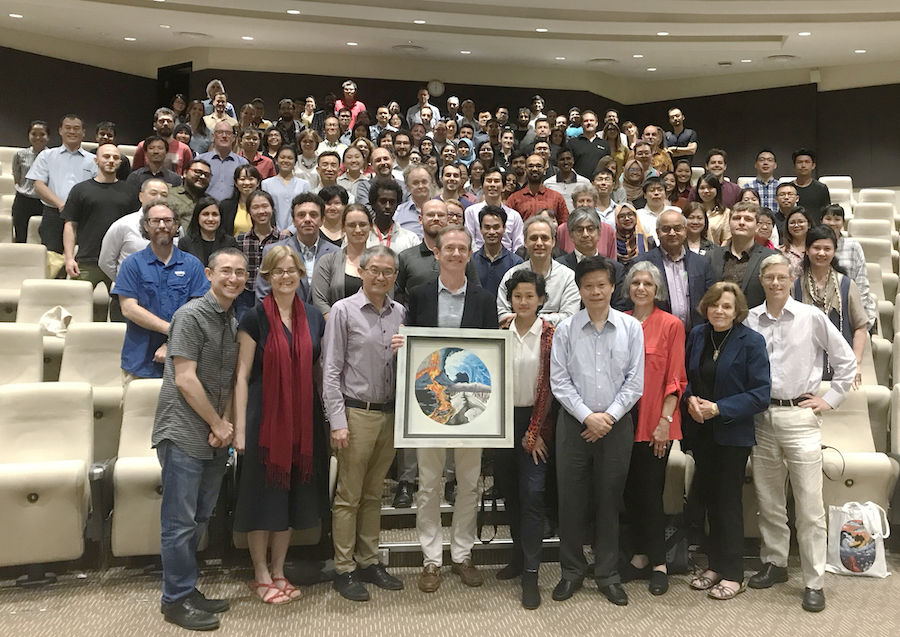
EOS researchers and staff during the EOS Annual Meeting in January 2020 (Source: Earth Observatory of Singapore)
I would like to thank Professor Fidel Costa for steering the Earth Observatory of Singapore (EOS) through a transitional period during his time as Interim Director. He remains a valued colleague at EOS in his role as Principal Investigator.
I was delighted that Associate Professor Emma Hill, a specialist in space geodesy and remote sensing, joined the management team at EOS this year in her role as Director of Research and Strategy.
Emma and I took the reins at EOS during extraordinary times. The global lockdown prevented EOS scientists from traveling to their research sites across Southeast Asia and threatened our ability to conduct research and collect data.
Our Innovative Response to the Pandemic
The Centre for Geohazard Observations, which manages our field instrumentation stations and networks around Southeast Asia, was able to continue business as usual as our field data can be transmitted via cellular and satellite communication. We can remotely monitor the health of the networks and investigate should something fail. Together with the help of our local collaborators around the region, we have been able to maintain our research throughout 2020.
Furthermore, EOS has pioneered innovations in technology which has enabled us to reduce the impact of the lockdown on our work. These technologies include infrasound monitoring which recently came into its own with the Ili Lewotolok volcano in Indonesia. Its eruption on 29 November was recorded by our infrasound network in Singapore. The volcano is approximately 2,500 km away from Singapore, which demonstrates the impressive detection capability of this technology developed by EOS.
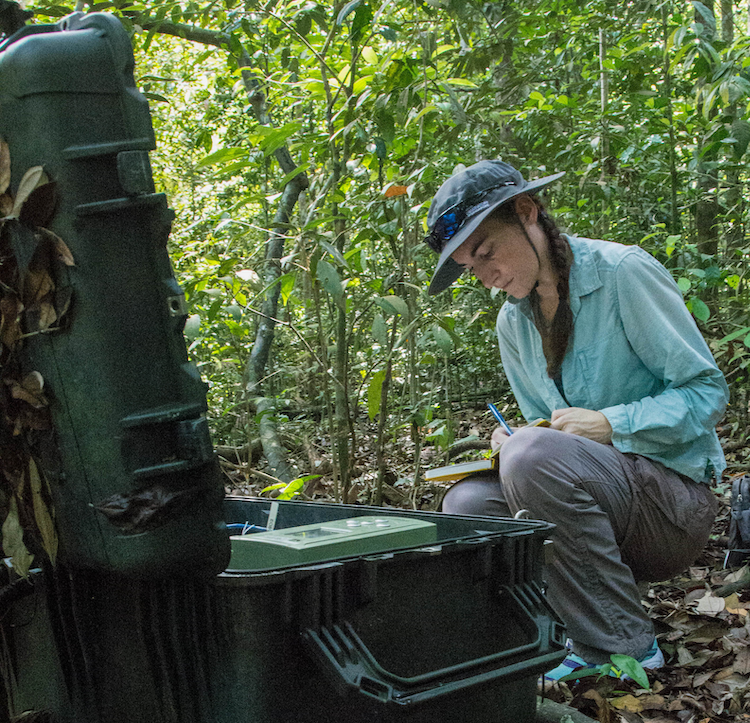
Research Associate Anna Perttu maintains a station from the Singapore Infrasound Network (Source: Benoit Taisne/Earth Observatory of Singapore)
This use of technology, which enables us to conduct research remotely, is becoming part of the new normal at EOS. Next year will see the launch of a new remote sensing laboratory at EOS. It focuses on monitoring natural hazards by using Synthetic Aperture Radar and optical imagery. The goal remains true to the EOS mission: towards safer and more sustainable societies.
The launch of the Curiosity Stream mini-series Climate Impact Asia in October provided a stark contrast between the time before the pandemic and how we work and live now. Filmed on location in the Philippines, Thailand, and Singapore in 2019, our documentary series takes a closer look at the research we carry out in the field.
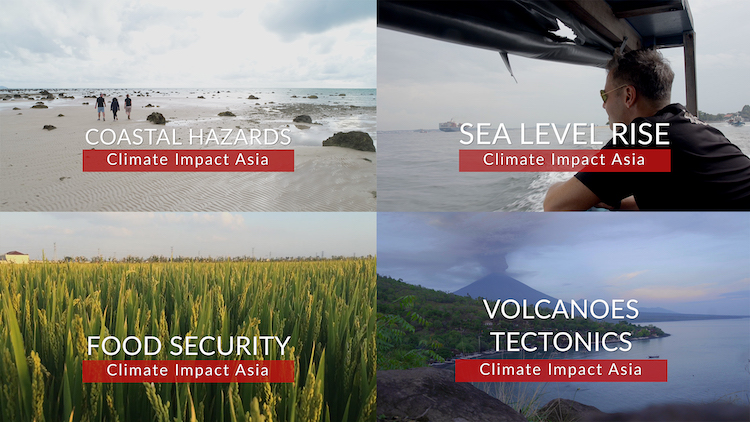
Climate Impact Asia is a four-part documentary following EOS researchers in the field (Source: Earth Observatory of Singapore)
Many EOS Principal Investigators were able to take advantage of the opportunity the lockdown presented and switched their focus to Singapore-based studies. For example, Assistant Professor Aron Meltzner’s work on sea-level rise, which was featured on Channel News Asia in March, is extending the record of sea-level change beyond the brief instrumental record to quantify regional processes.
SEA2: A Multi-disciplinary Project to Address Climate Change in Singapore
Sea-level rise is an area of research close to my heart. Climate change is the biggest global challenge that we face today. Nobody will be immune from the impacts of climate change this century. In Southeast Asia, we already experience rising sea levels, flooding, intense rainfall, strong winds, and extreme temperatures.
It is not too late and now is the time for Earth scientists to show leadership in the creation of a safer future. In Singapore, we are doing that now.
SEA2 is a multi-disciplinary project led by five EOS Principal Investigators and is a visionary model for tackling some of the most pressing and challenging problems of our age. Our team of leading experts comes from the fields of reconstructing sea-level change, polar ice-sheet history, oceanography, geodesy, glacial isostatic adjustment modelling, and the statistical analysis and modelling of sea-level data. Through training, the SEA2 team will build a home-grown scientific community that can respond to Southeast Asia’s need for future sea-level projections and their interpretation.
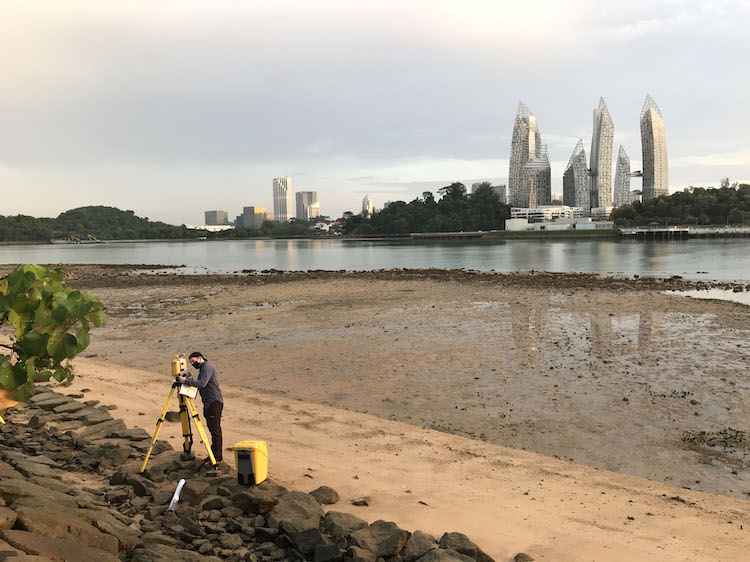
EOS researcher conducting fieldwork in Sentosa to better understand past sea levels around Singapore (Source: Aron Meltzner/Earth Observatory of Singapore)
Our Contribution to the International Scientific Community in 2020
Our work continues to be respected in the international scientific community. Close to one hundred scientific journal articles featured research from EOS scientists in 2020. That represents an astonishing output of intellectual capital.
We continue to participate in academic forums, even though the conferences have moved online in response to the travel restrictions. Our presence at this year’s virtual American Geophysical Union Fall Meeting was as strong as ever. We continuously strive to deliver our mission and contribute to a deeper understanding of Earth sciences around the world.
EOS Exhibitions in Singapore
As restrictions have eased in Singapore, we have been able to jointly launch two new exhibitions: the Geology Gallery at Sentosa Discovery Centre, in collaboration with Sentosa Development Corporation, and Earth Alive, developed together with our long-standing partner, Science Centre Singapore. Both aim to delight visitors young and old with interactive exhibits allowing them to explore Earth sciences like never before.
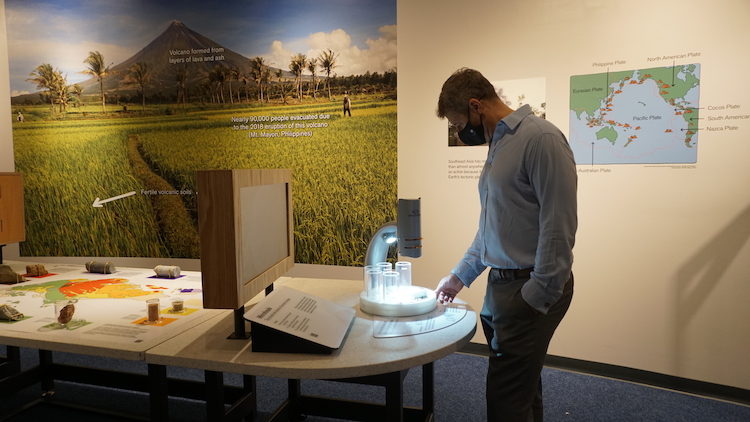
Professor Horton interacting with an exhibit from 'Earth Alive' (Source: Rachel Siao/Earth Observatory of Singapore)
Our Science and Social Media
Presidential Postdoctoral Fellow Karen Lythgoe’s work on the subsurface structure of Singapore proved to be popular on our Facebook page. This is a great example of our research in Singapore and Earth sciences outreach in action. Kudos to our talented Community Engagement team for their incisive communication of the science to the public.
EOS PhD Graduates
The future is in our hands and this year has seen a steady flow of PhD students graduate from EOS. Congratulations to Fabio Manta, Stephen Pansino, Weiran Li, Deepa Mele Veedu, Sagar Shrishailappa Masuti, Priyamvada Nanjundiah and Rino Salman. They have come from far and wide but one thing unifies them – our mission lives and breathes in these thought leaders of the future.
It just leaves me to wish you a happy holiday over the festive period and have a safe and healthy 2021!
Professor Benjamin P Horton
Director, Earth Observatory of Singapore